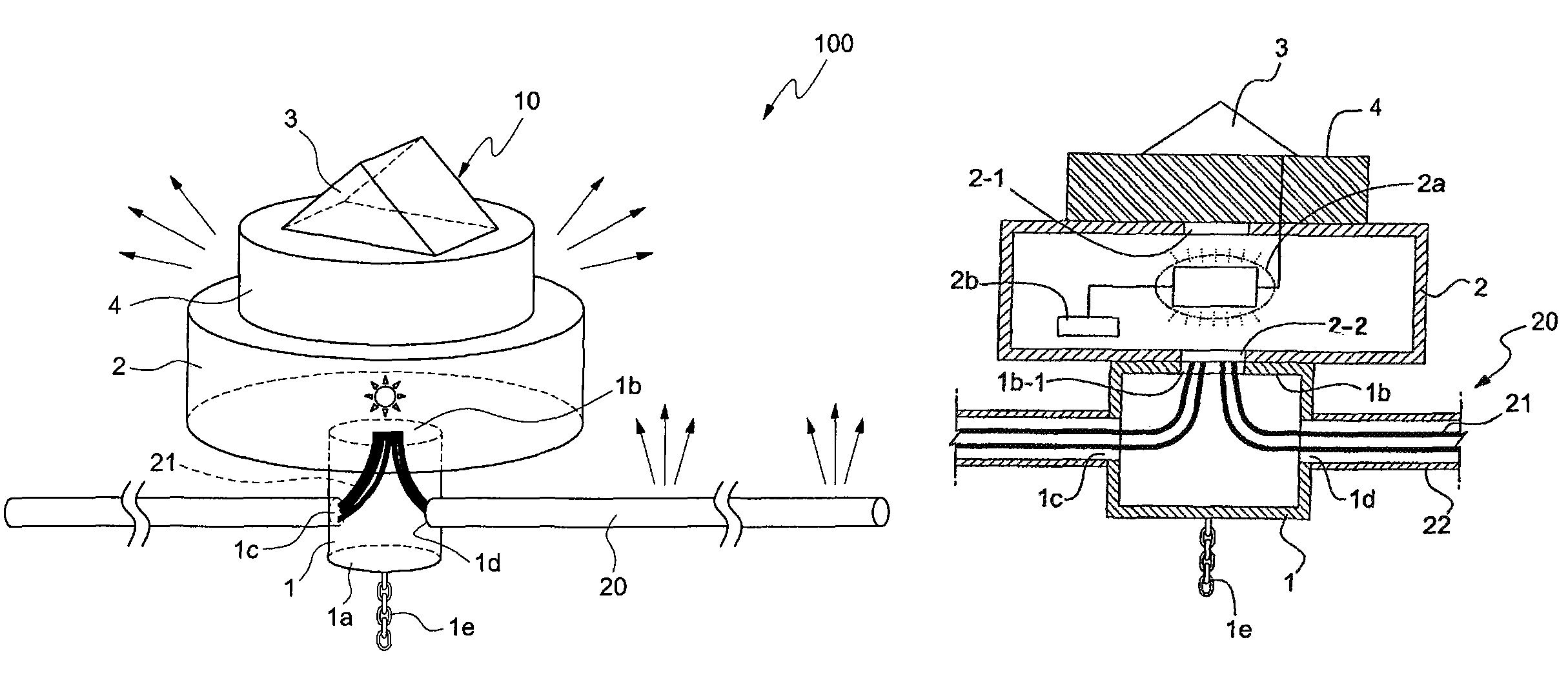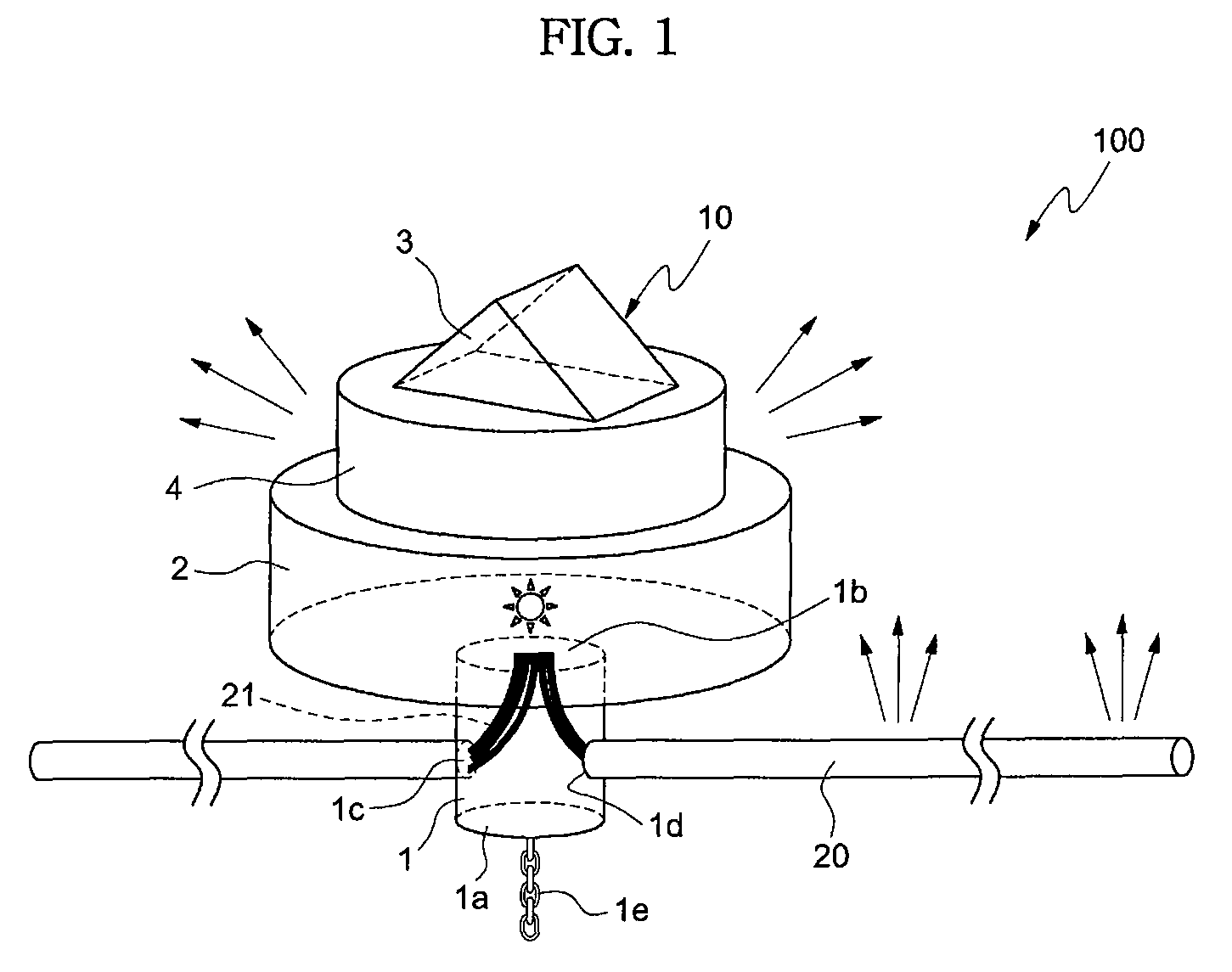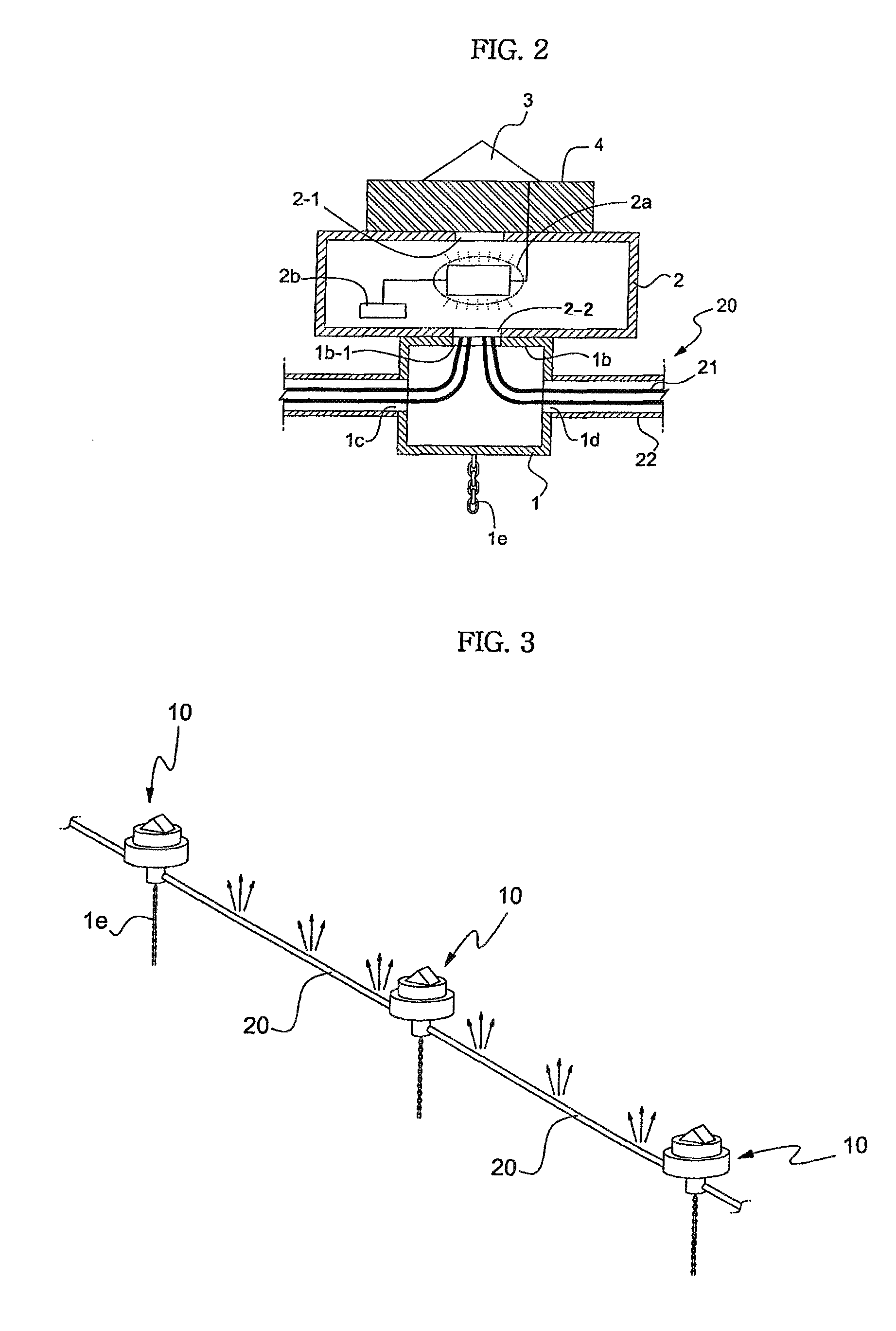Aquatic light emitting device
a technology of light-emitting devices and water-based components, which is applied in waterborne vessels, climate sustainability, and power-in-place devices, etc., can solve the problems of frequent out-of-orderness of bulb exchangers and increased maintenance and repair costs
- Summary
- Abstract
- Description
- Claims
- Application Information
AI Technical Summary
Benefits of technology
Problems solved by technology
Method used
Image
Examples
Embodiment Construction
[0015]Hereinafter, the preferred embodiment of the present invention is described in detail with reference with the accompanying drawings.
[0016]FIG. 1 is a perspective view of a point light emitting unit and two linear light emitting units constituting an aquatic light emitting device according to the present invention and FIG. 2 is a cross-sectional view of FIG. 1.
[0017]The aquatic light emitting device 100 according to the present invention comprises a point light emitting unit 10 and a linear light emitting unit 20. The point light emitting unit 10 comprises a floating member 1, a light source part 2 and a power supply part 3, and the linear light emitting unit 20 includes an optical fiber 21 surrounded by a transparent tube 22. The aquatic light emitting device illustrated in FIG. 1 and FIG. 2 is an example according to one embodiment of the present invention.
[0018]The floating member 1 is a cylindrical or polygonal hollow body. The lower part of the hollow body may be equal to ...
PUM
 Login to View More
Login to View More Abstract
Description
Claims
Application Information
 Login to View More
Login to View More - R&D
- Intellectual Property
- Life Sciences
- Materials
- Tech Scout
- Unparalleled Data Quality
- Higher Quality Content
- 60% Fewer Hallucinations
Browse by: Latest US Patents, China's latest patents, Technical Efficacy Thesaurus, Application Domain, Technology Topic, Popular Technical Reports.
© 2025 PatSnap. All rights reserved.Legal|Privacy policy|Modern Slavery Act Transparency Statement|Sitemap|About US| Contact US: help@patsnap.com



